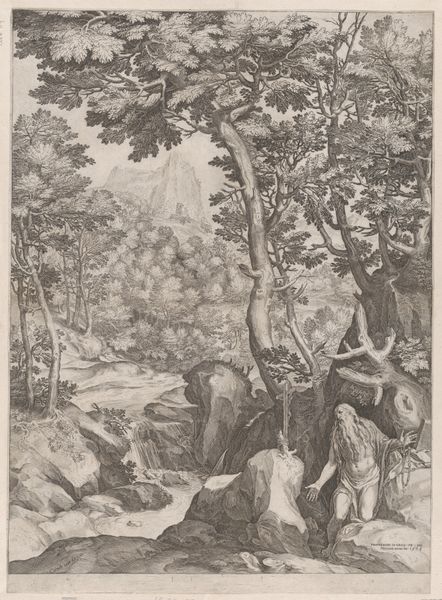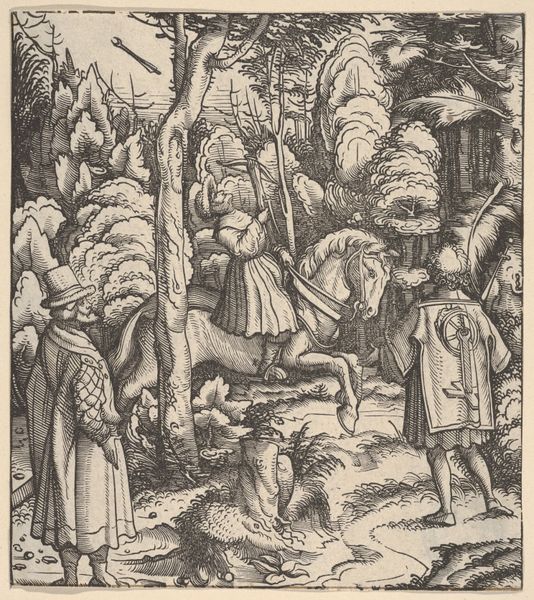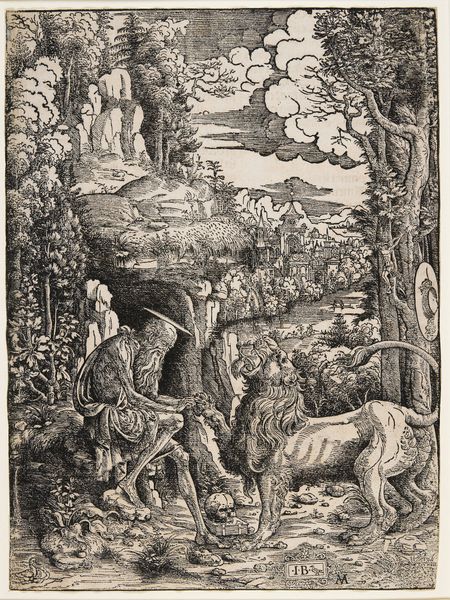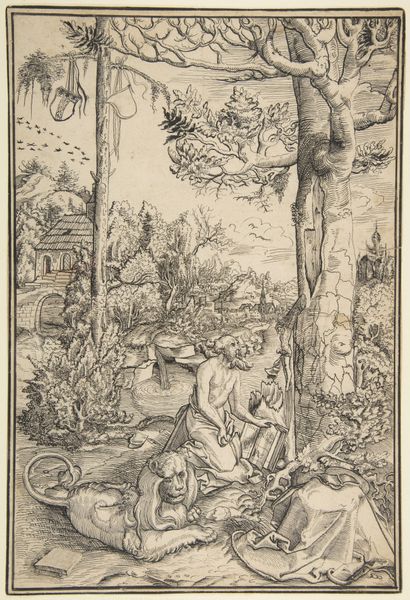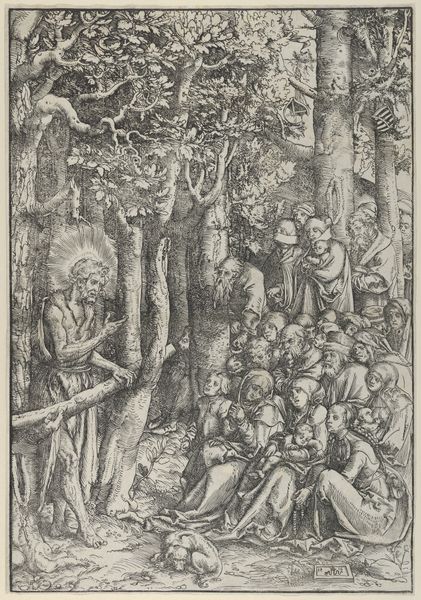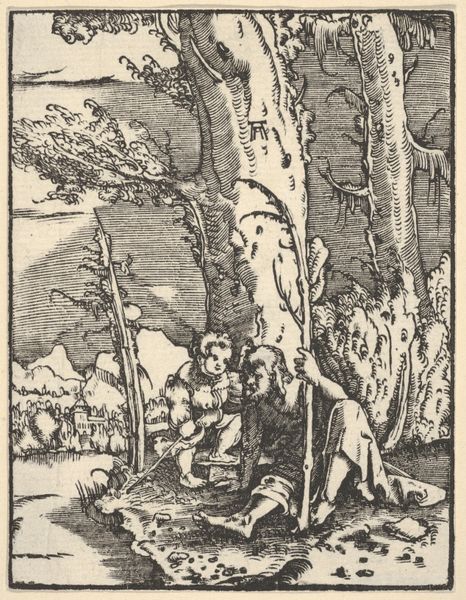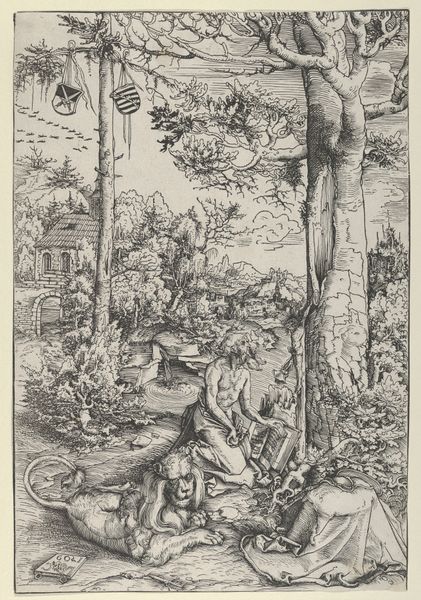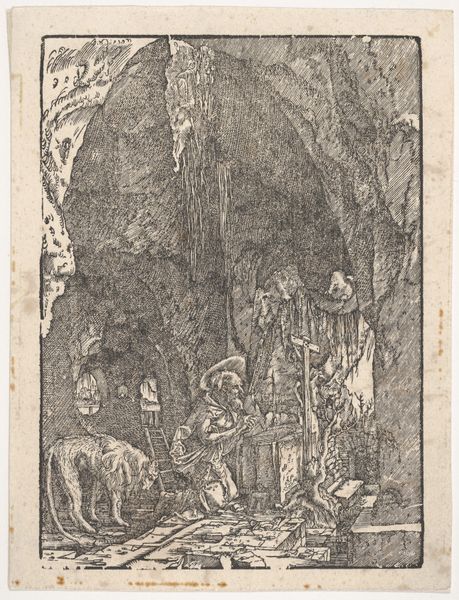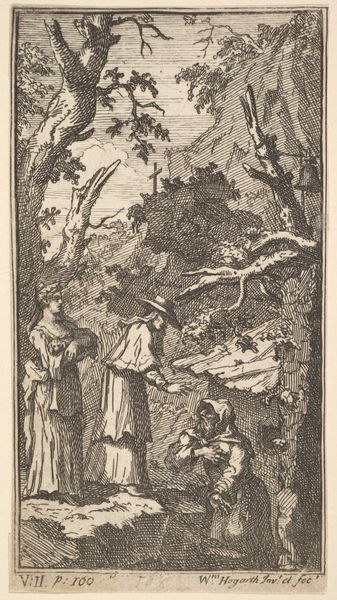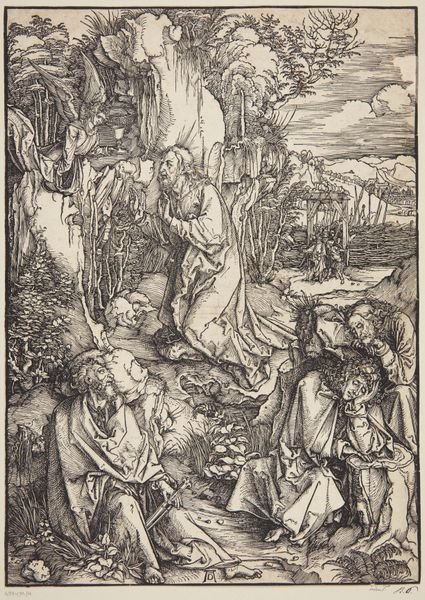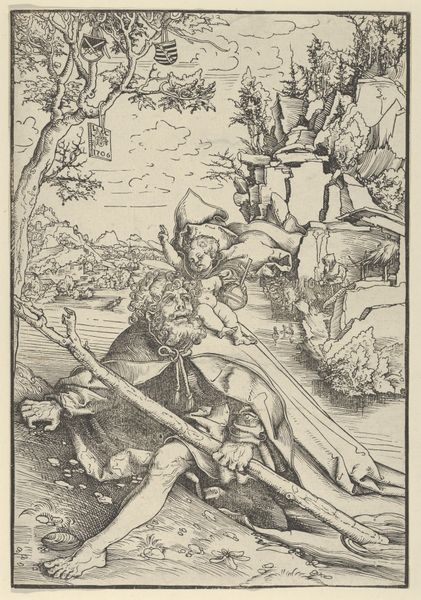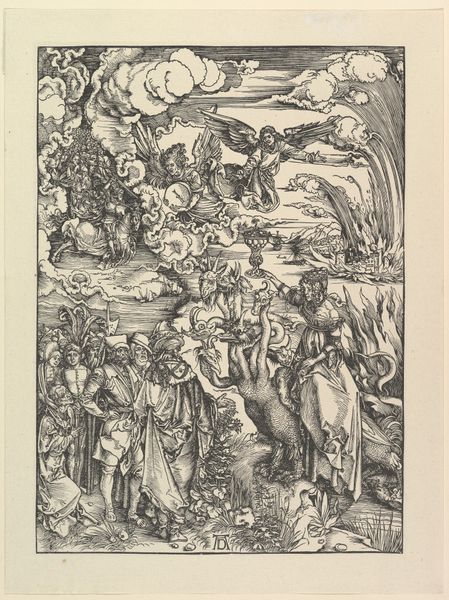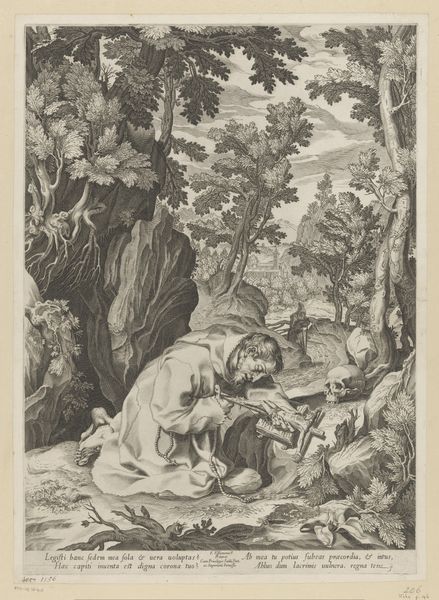
The Agony in the Garden, from Speculum passionis domini nostri Ihesu Christi 1507
0:00
0:00
drawing, print, etching
#
drawing
#
narrative-art
# print
#
etching
#
figuration
#
history-painting
#
northern-renaissance
#
christ
Dimensions: Sheet: 9 7/16 × 6 7/16 in. (24 × 16.4 cm)
Copyright: Public Domain
Editor: So, this etching is called "The Agony in the Garden" by Hans Schäufelein, from 1507. It's a scene of quiet desperation. There’s a deep contrast between Christ’s isolation and the impending arrival of his captors. What strikes you most about it? Curator: This image is deeply entrenched in its historical and cultural context. Consider the anxieties surrounding religious reformations brewing in the early 16th century. Look at Christ’s posture, almost pleading. It speaks to a broader questioning of established authority. Do you see it as reflecting a crisis of faith that might resonate with contemporary struggles against oppressive power structures? Editor: I see what you mean! It's interesting how he’s alone, even though his disciples are nearby. Is this printmaking technique—the stark lines and contrasts—influential at the time to communicate emotional states? Curator: Absolutely. The woodcut medium, particularly prominent in the Northern Renaissance, lent itself to powerful and often politically charged imagery. Its accessibility allowed for broader dissemination of ideas. It's an important tool in shaping public opinion about faith and its relationship with established systems. Who are the intended audience and what messages were supposed to echo into people’s consciousness? Editor: Wow, thinking about this visually striking print as a kind of protest before the Reformation… I’d never considered it that way! Curator: It reminds us that art often serves as a potent form of dissent, providing a visual vocabulary to articulate and challenge the dominant narratives. Every element could lead to better interpreting cultural artifacts. Editor: I'll never look at religious art the same way again! Thanks for the new perspective. Curator: My pleasure. It's a reminder that engaging with art requires that we embrace the multifaceted interpretations which stem from art as a vehicle for societal transformations.
Comments
No comments
Be the first to comment and join the conversation on the ultimate creative platform.
